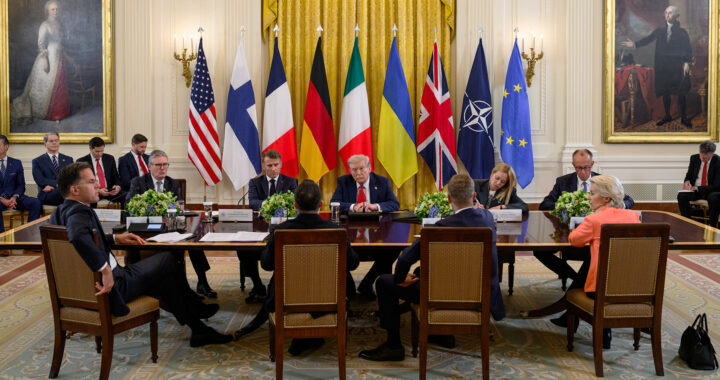President Donald Trump hosted an urgent meeting at the White House with Ukrainian President Volodymyr Zelenskyy and several European leaders as part of an attempt to seek progress toward ending the longstanding Russia-Ukraine War. The talks drew unusual participation from multiple heads of government and underscored the urgency surrounding security arrangements, peace negotiations, and the future political balance of European involvement.
The 18 August 2025 Trump-Zelenskyy meeting followed the much-hyped Trump-Putin Summit held on 15 August 2025 in Alaska. It did not produce ceasefire guarantees since the White House framed it as a mere listening exercise for the U.S. and Russia. Reports have even noted that it even left Ukraine facing pressure to cede territories. The situation prompted Zelenskyy to ask European leaders to accompany him for a face-to-face meeting with Trump.
Security guarantees for Ukraine emerged as the dominant theme of the discussions. Zelensky and European leaders pressed Trump to clarify the role the United States would play in ensuring that Russia could not regroup and attack again following any settlement. Trump suggested European nations would take the lead and acknowledged U.S. coordination as essential to strengthening deterrence. The following are the main highlights of the meeting:
• Security Guarantees at the Center of Talks: Discussions focused on how the security of Ukraine would be upheld after a peace agreement. Trump suggested European countries would take the lead in providing guarantees, coordinated with the United States, though no specific commitments or frameworks were announced.
• Trump Left Option of U.S. Troops Open: In a notable shift, Trump did not rule out sending American forces to Ukraine as peacekeepers. Although he made no promises, his openness to this possibility demonstrated a departure from earlier pledges to avoid foreign entanglements, signaling potential flexibility in U.S. policy.
• Push for a Trilateral Meeting With Putin: Trump revealed he had spoken directly with Vladimir Putin during the day and had begun working toward a trilateral meeting between Putin and Zelensky. He emphasized the eventual goal of a trilateral summit including himself. The participation of Putin remains uncertain.
• Pronounced Desire for Greater Involvement: French President Emmanuel Macron suggested expanding the talks into a quadrilateral format to ensure the direct role of Europe in shaping security guarantees. Trump gave no indication of support for this proposal. This leaves European leaders wary of being sidelined in negotiations.
• Reversal of Immediate Ceasefire Stance: Trump changed his stance on the need for an immediate ceasefire in favor of pursuing a comprehensive peace settlement. European leaders, notably German Chancellor Friedrich Merz, expressed concern and urged Trump to reconsider the importance of halting hostilities first.
The tone of the Trump-Zelenskyy meeting differed markedly from the heated confrontations seen in the White House last February 2025. Zelensky was conscious of previous tensions. He struck a conciliatory note and offered personal gestures, including a letter from his wife to Melania Trump. He repeatedly expressed gratitude and appeared carefully scripted in his remarks. Even his choice of a formal suit, instead of a military uniform, aimed at fostering rapport.
It is also worth mentioning that the decision of European leaders to rush to Washington highlighted both the urgency and the risks they perceive in Trump-led diplomacy. Many viewed the unusual move as necessary to ensure they remained active participants in shaping security arrangements. Their presence underlined concerns that decisions made without their direct involvement could affect European security architecture for decades to come.





